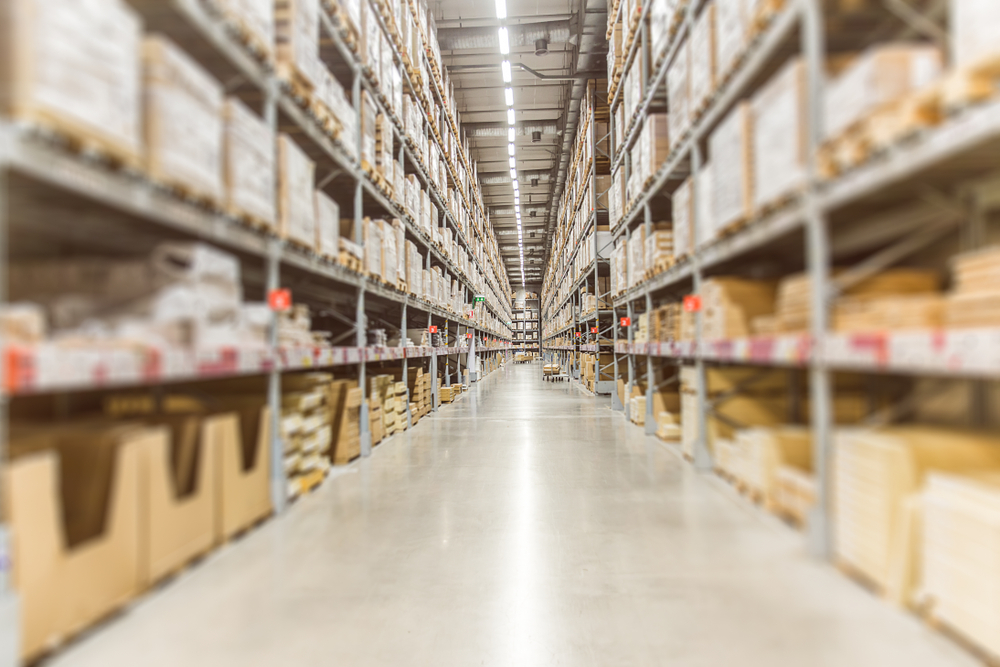
Image Credit: Quality Stock Arts
The COVID-19 pandemic and the consequent lockdowns worldwide have massively disrupted global logistics and supply chains, causing new challenges for retail and manufacturing operations. They have shifted demand patterns overnight, and the increased restrictions on goods' movement have caused havoc.
A new report from Lux Research suggests that innovative sensors could improve and modernize logistics, reinforcing the infrastructure of global supply chains and addressing the growing demand for close monitoring of goods throughout the supply chain.
Logistics vs Supply Chain
The terms ‘logistics’ and ‘supply chain’ are often used interchangeably. However, they are two separate but linked ideas. The supply chain covers the sequence of processes involved in the production and distribution of an item; logistics encompasses the flow of physical goods and information between two points and connects supply chains in different sectors/
Each stage of the supply chain – point of origin, warehousing, transit, and destination – involves logistics. According to the report Sensing for Modern Logistics, each of these has a particular set of parameters that could impact the supply chain.
Parameters include:
- Ensuring the correct product in the right quantity is prepared for shipment
- Making sure goods are stored in the right conditions
- Keeping track of product location and length of stay
- Ensuring the journey itself is uneventful with only the desired activities occurring at the expected time and place
- Confirming the integrity of the goods after long journeys
“Things that go wrong in the logistics process include pilfering, asset misplacement, and physical damage due to improper storage conditions and unexpected events,” explains Lisheng Gao, lead author of the report and analyst at Lux Research.
COVID-19 and the Supply Chain Disruption
The logistics process must be built, sustained and periodically updated to ensure the smooth movement of raw materials and products. This is perhaps an even more pressing issue, given the current COVID-19 situation. The pandemic has and continues to severely disrupt the process by altering demand patterns and restricting goods' movement. These logistical dilemmas are only likely to get worse as COVID-19 vaccines become available, says the report.
It’s now more important than ever to ensure the right goods are transported in the right quantities, under the right conditions, and delivered to the right place at the right time. Only then will it be possible for society to remain functional and ensure that abundant resources are available to fight the pandemic.”
Lisheng Gao, lead author and analyst at Lux Research
The Role of Sensors in Preventing Supply Chain Disruption
Sensors could play a vital role in preventing and addressing complications, alerting companies to problems even before they become an issue. Sensors could be employed to monitor environmental conditions, prevent misplacement, identify damages and prevent accidents, ensure compliance, track locations, and reveal real-time conditions.
Sensing solutions for logistics are highly varied, depending on the different companies' customized demands across various industries. The ultimate aim is to provide high transparency and visibility of the process, with as little cost as possible.
Radiofrequency identification (RFID) and near-field communication (NFC) sensors are already incorporated into many supply chain operations, as are those integrated into GPS trackers. These continuously follow the movement and condition of a product throughout the transit process, providing real-time intelligence and allowing companies to make timely decisions and optimize the process.
However, the advent of the Internet of Things (IoT) has opened the door to a wide range of possibilities in terms of sensing technologies.
“IoT sensing solutions are the most promising, as they can enhance data visibility and transparency across the entire process and facilitate planning, optimizing, and uncovering other invisible insights,” says Gao.
Even in the absence of network connections such as Bluetooth, such a sensor can divulge the logistical journey of the process and identify events – shock, temperature deviation and humidity - that might have jeopardized the goods in transit.
The Future of Sensors in Logistics
There are currently no standardized sensing solutions that cover the entire logistics process. The market is fragmented and filled with highly customized solutions, each assisting logistics at different stages. However, Lux Research predicts a gradual standardization and consolidation of sensing solutions within similar industries, united by their shared interests to improve the process, and the increasing availability of mature and low-cost sensor technologies. The current fragmentation could be beneficial in creating industry-specific sensing solutions.
Sensors could play a vital role in enabling information transparency to aid planning, optimization, and risk management in the supply chain. However, without analytics, the event's root cause will not be seen, so providers will also need to develop analytics for their sensing solutions.
Reference and Further Reading
Gao L. et al. (2020) Sensing for Modern Logistics, Lux Research [Online] https://www.luxresearchinc.com/ Accessed 9th November 2020.
Accenture (2020) Building supply chain resilience: What to do now and next during COVID-19, Accenture [Online] https://www.accenture.com/gb-en/about/company/coronavirus-supply-chain-impact Accessed 10th November 2020.
Yuva J. (2018) Sensing the Supply Chain. Supply and Demand Chain Executive [Online] https://www.sdcexec.com/software-technology/article/21008214/sensor-usage-in-the-supply-chain Accessed 10th November 2020.
Disclaimer: The views expressed here are those of the author expressed in their private capacity and do not necessarily represent the views of AZoM.com Limited T/A AZoNetwork the owner and operator of this website. This disclaimer forms part of the Terms and conditions of use of this website.